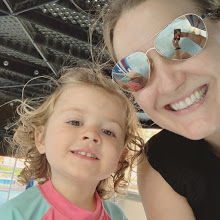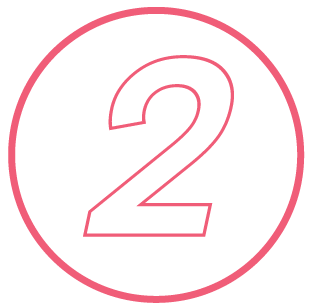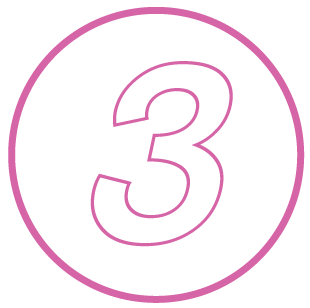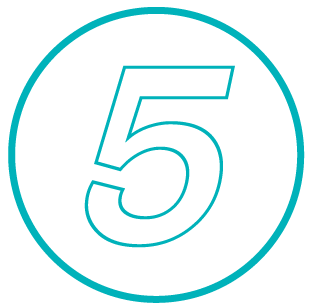
By Marnie Gartrell, Architect
 I’m a mom to a demanding three-year-old. Our opposing views on everything from bedtime to potty breaks, result in time-consuming negotiations full of tears (her) and a roller coaster ride of emotions (me) – usually, ending in a “time out” for everyone. This test of wills can play out ten times before breakfast. So, recently, sensing a new debate on the horizon, I blurted out “Because I said so, and I’m the Mom”. This moment got me thinking -- how decisions get made by decision-makers is actually more important than what’s decided. Exercising raw power isn’t the way to achieve long term cohesion in a family – or in an organization.
I’m a mom to a demanding three-year-old. Our opposing views on everything from bedtime to potty breaks, result in time-consuming negotiations full of tears (her) and a roller coaster ride of emotions (me) – usually, ending in a “time out” for everyone. This test of wills can play out ten times before breakfast. So, recently, sensing a new debate on the horizon, I blurted out “Because I said so, and I’m the Mom”. This moment got me thinking -- how decisions get made by decision-makers is actually more important than what’s decided. Exercising raw power isn’t the way to achieve long term cohesion in a family – or in an organization.
Around the dinner table or the boardroom table, when those in power afford stakeholders the opportunity to influence the decisions that affect their lives, it speaks to the inclusive values and culture of the organization and builds trust. And trust speeds up everything. Call it what you will, public participation (P2), stakeholder engagement or community consultation; meaningful engagement requires actively seeking input from those that have an interest or stake in an issue – trusting that a wider range of views and concerns from all people regardless of race, color, sexual orientation, national origin or income, will lead to better, more sustainable, long-term decisions. Stakeholder engagement is not one-way; it is a deliberate, iterative process of collecting and validating the views and concerns of participants. Decisions are reflected back to the community, so folks understand how their diverse concerns were considered, even if, for some, the decision is not the result they championed.

Here are 5 Reasons Why P2 is more important than ever:
 Unanticipated Expertise
Unanticipated Expertise
Actively recognizing who should have a seat at the table requires a sustained effort prior to decision-making. Stakeholders frequently bring more than their critical perspective and lived experience to the process. Some may bring expertise in methodologies or industries, knowledge of history, traditions, or cultural protocols, or improved access to desirable relationships or financial resources. The tremendous amount of useful knowledge, ideas, and energy provided (often gratis) by stakeholders can be invaluable to an organization, and a design team. It can identify problems that can and should be solved – early.
It can identify problems that can and should be solved – early.
To solve a problem, the (often tricky) first step is to determine what the problem actually is? Meaningful stakeholder engagement improves decisions by identifying critical issues early on, articulating why those concerns are important and prioritizing them. Missed opportunities and wasted resources can be avoided when problems are identified early. For the design team this often eliminates costly rework.  It builds problem solving capacity within your organization
It builds problem solving capacity within your organization
Decision-makers, who commit to meaningful stakeholder engagement, can expect that the time and attention devoted to the process will result in participants’ mutual understanding of the issues at hand. Through the consultation process, stakeholders gain a broader knowledge of the complexity of the problem; recognizing that the fundamental motivation of others may be very different from their own. Just like any other skill, an appreciation for different viewpoints, empathy for the unique pressures’ others face, and a greater openness to opposing ideas, are skills that once gained can be transferable to future projects and situations. Social License to Operate
Social License to Operate
Briefly put, social license is all about relationship building. It is a socially constructed perception that the organization (or project) has a place of legitimacy and credibility within a community.1 An organization’s social license “is based on trust and confidence –hard to win, easy to lose”.2 Having social license to operate is now expected of most organizations. It’s common in our social media obsessed, hyper-transparent society to witness criticisms of business, organizations and leaders that aren’t “seen” as doing more to bring about positive change (#howdareyou). Meaningful stakeholder engagement builds social license. Without it, even well-intentioned organizations can grapple with blind spots, suddenly finding themselves in a defensive dialogue with stakeholders —a situation that can result in significant and long-lasting loss of reputation, damaged relationships, and the erosion of trust.
It’s the right thing to do.
Feminist architect, educator, and community activist Leslie Kanes Weisman writes “the appropriation and use of space are political acts. The kinds of spaces we have or don’t have, or are denied access to can empower us or render us powerless. Spaces can enhance or restrict, nurture or impoverish. We must demand the right to architectural settings which will support the essential needs of all …”3 The process of design, and the built forms’ architects create embody the priorities and beliefs of the decision-makers who hire us. If we believe that architecture can create better places, that it can affect the public good and improve the quality of life for citizens, then we carry a social responsibility to amplify messages of inclusivity and an obligation to advocate for meaningful stakeholder engagement in design projects.
Meaningful engagement is not about abandoning decision-making authority and “just doing what the public says” or simply asking stakeholders “what do you want?” That, my friend, is a recipe for disaster and disappointment. Organizations (and families for that matter) need leadership. The character of that leadership and the values of the organization are revealed by the decision-making process, particularly when tough decisions are on the table. Engagement is one way to build stronger trust and harmony– even when your target audience is your “threenager”.
Sources:
- Black, Leeora. 2013. The Social Licence to Operate: Your Management Framework for Complex Times. Oxford, UK: Do Sustainability.
- O’Dell, Garry. “Ethics Explainer: Social License to Operate.” THE ETHICS CENTRE, 29 Apr. 2019, ethics.org.au/ethics-explainer-social-license-to-operate/.
- Weisman, Leslie Kanes. “Women's Environmental Rights: A Manifesto from Heresies: A Feminist Publication on Art and Politics (1981).” Gender Space Architecture: an Interdisciplinary Introduction, edited by Iain Border et al., Routledge, 2000, pp. 1–4.
Marnie is an Architect at Number TEN Architectural Group

